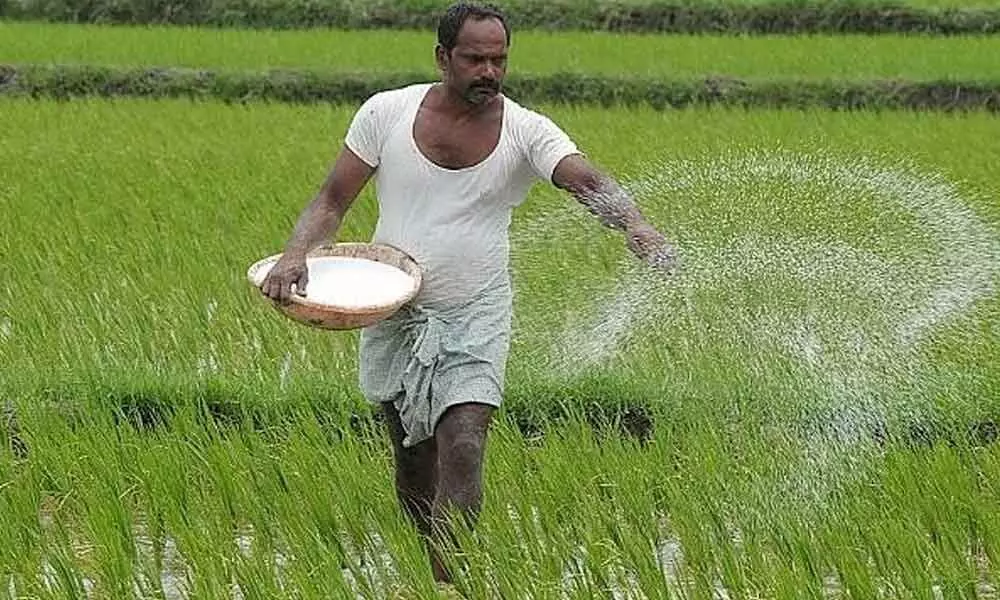Rising natural gas prices likely to inflate fertiliser subsidy bill
The prices of natural gas and other raw materials have hit the roof unprecedentedly. This, in turn, is expected to inflate the Centre’s fertiliser subsidy bill by nearly 62 per cent (from Rs50,000 crore to Rs130,000 crore) this fiscal. Significantly, the annual fertiliser subsidy bill had earlier been budgeted to be Rs79,530 crore.
image for illustrative purpose

The prices of natural gas and other raw materials have hit the roof unprecedentedly. This, in turn, is expected to inflate the Centre's fertiliser subsidy bill by nearly 62 per cent (from Rs50,000 crore to Rs130,000 crore) this fiscal. Significantly, the annual fertiliser subsidy bill had earlier been budgeted to be Rs79,530 crore. This is notwithstanding the fact that the sales volume of fertilisers has been on a downslide by nearly 10 per cent year-on-year.
Interestingly, global fertilizer prices have surged roughly 200 per cent over the past year after record rises in the price of the two main energy sources – coal and natural gas – used to produce the crop nutrients and new export restrictions on fertilizers by China and Russia.
India happens to be the top importer of urea and is a major buyer of di-ammonium phosphate (DAP) needed to feed its huge agriculture sector which employs about 60 per cent of the country's workforce and accounts for 15 per cent of $2.7 trillion economy. India imports an average 60 per cent of the 10-12 million tonnes of its annual DAP consumption. Of this 40 per cent comes from China. Some DAP parcels from China have been delayed due to exports restriction.
Interestingly, in India, the Centre provides financial support to companies such as National Fertilizer Limited, Madras Fertiliser Limited, Rashtriya Chemical & Fertilisers Limited, Chamabal Fertilsers & Chemicals Limited that sell fertilizers at below-market rates. Actually, to encourage farmers to use fertilisers for better crop yield, the government keeps their retail sales price (RSP) significantly lower than the market rate, and reimburses the difference to manufacturers through subsidy payments. It is also pertinent here to mention that for long, the government provisioning for such subsidy payments have been inadequate, which led to regular build-up of arrears that posed a challenge to the sector. But last fiscal, the government cleared the arrears through an additional disbursement of Rs62,638 crore.
This time round, the Modi 2.0 government has been extra cautious and proactive, given the strategic importance of the fertiliser sector. The government did not want to take a chance and has already announced an additional subsidy of Rs 21,328 crore (Rs 14,775 crore in May 2021 and Rs6,553 crore in October 2021) for non-urea fertilisers. Experts, however feel that despite this, there will likely be a shortfall of nearly Rs 30,000 crore, largely for urea.
However, when it comes to profitability, experts feel that urea makers are unlikely to be affected because the higher cost of gas is a pass-through with the government fixing the RSP. For non-urea fertiliser makers, while the selling price is not fixed, the government pays subsidy as per the nutrient-based subsidy scheme rates.

